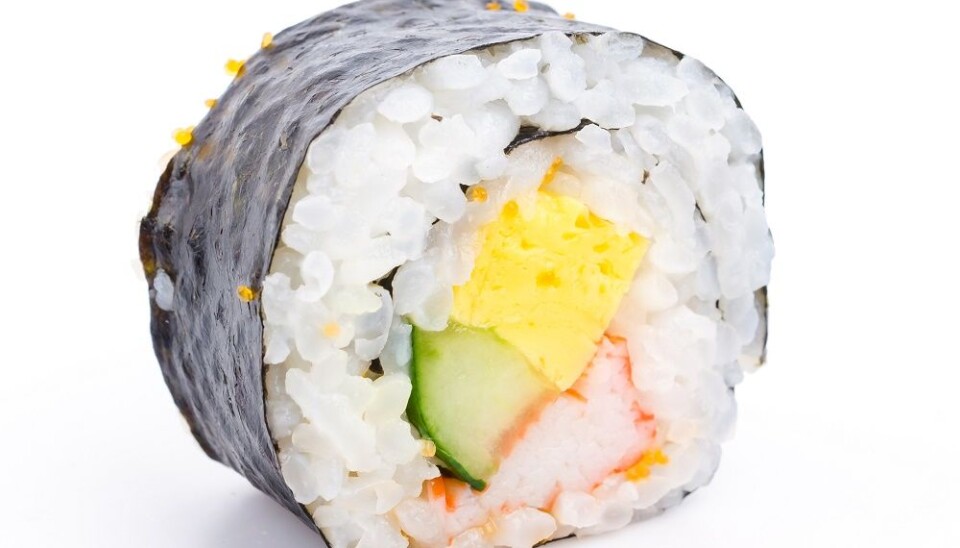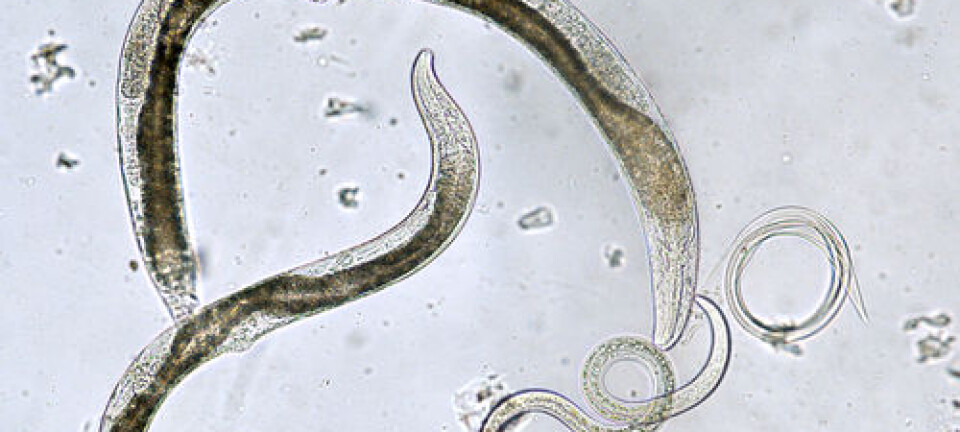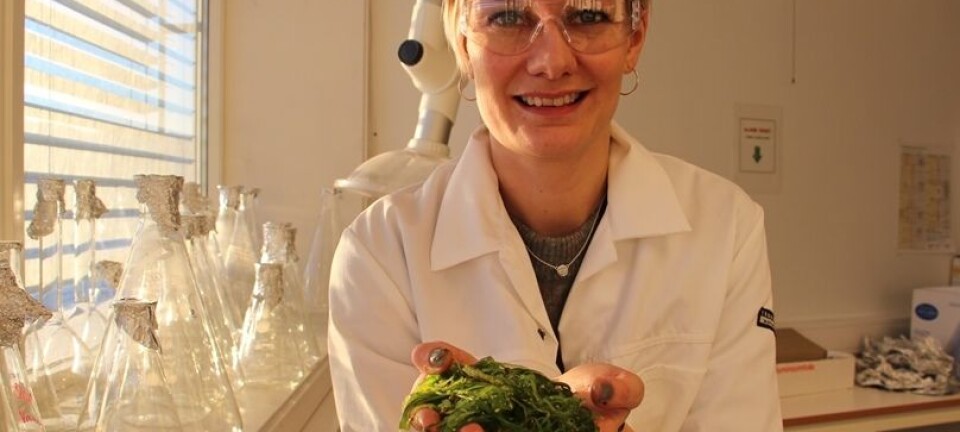An article from Norwegian SciTech News at SINTEF

Breakthrough for Norwegian nori
Norwegian lab successfully cultivates red Porphyra algae for the first time. The algae has great potential as a "superfood".
Hopes are being raised for a new Norwegian business venture. The modest red alga, best known as “seaweed sushi paper” or “nori”, is the most valuable macroalga species on the international market, and researchers in Trondheim have recently succeeded in cultivating it in the lab.
Master chefs on the team
The research work into the species red cellophane, known in Latin as Wildemania amplissima, is part of the so-called “NYMAT” (New Food) project. It is a joint effort involving SINTEF, the Austevoll Seaweed Farm, and Master Chef Ørjan Johannesen who won the prestigious gastronomic Bocuse d’Or competition in 2015.
SINTEF researcher Silje Forbord is heading the project. She believes that Norway has all the attributes needed to be in the forefront of commercial macroalga cultivation, and that red cellophane has great potential as a “superfood” that will tempt Norwegian palates.
“We have extensive experience in the cultivation of different kinds of macroalgae, and our hope is that red cellophane can become a key species in Norwegian aquaculture”, says Forbord. “There are currently about six or seven Norwegian firms engaged in seaweed cultivation, but the process has to be automated to boost profitability”, she says.
According to Forbord, the challenge ahead is to scale up the cultivation process and carry out large-scale production tests under marine conditions.
Special life-cycle
“Red cellophane is very nutritious and ideal both as food for humans and animal feed. However, this species has a very special life-cycle, so we’re very excited that we’ve succeeded in cultivating it”, says marine biologist Andreas Quale Lavik at NTNU.
Lavik has collected algae from five locations in the Trondheim area and brought on new individuals over a six-month period.
“In theory, our approach should be quite straightforward, but we’ve run into some challenges on the way”, he says.
Red cellophane undergoes a so-called heteromorphic alteration of generations, meaning that the sexual and asexual stages of the life-cycle are very different.
An eight-month “pregnancy”
Initially, the researchers isolated mature sex cells and placed them in Petri dishes under artificial light for six months. These developed into what is called the conchocelis phase. The next step was to change the lighting regime to induce the cells and enable them to produce new spores called conchospores.
“After about two months, these conchospores succeeded in growing into new, individual plants”, says Lavik, who has dedicated his Master’s thesis to researching into this process.
Both a superfood and fish feed
There are about 70 different species of red Porphyra seaweeds worldwide, and at least seven of these can be found on Norwegian seashores.
The research team is hoping that in the near future, locally-sourced Norwegian seaweeds will provide feed for farmed fish. Currently, about 70 per cent of fish feed is derived from Brazilian soya beans.
“Soya beans are rich in protein, but so too are Norwegian red seaweeds. It will probably be some years before we see extensive commercial forests of seaweeds along the Norwegian coast, but I’m convinced that that day will come”, says Lavik.
Sources:
Andreas Quale Lavik: Cultivation of Porphyra in a controlled environment. MACODEV – SINTEF Sealab 2015 [Master’s degree presentation]
Kristine Braaten Steinhovden and Silje Forbord: Nye muligheter med dyrking av norsk nori (New opportunities from the cultivation of Norwegian “nori”). The periodical Norsk fiskeoppdrett, 12-2013. (in Norwegian).
































